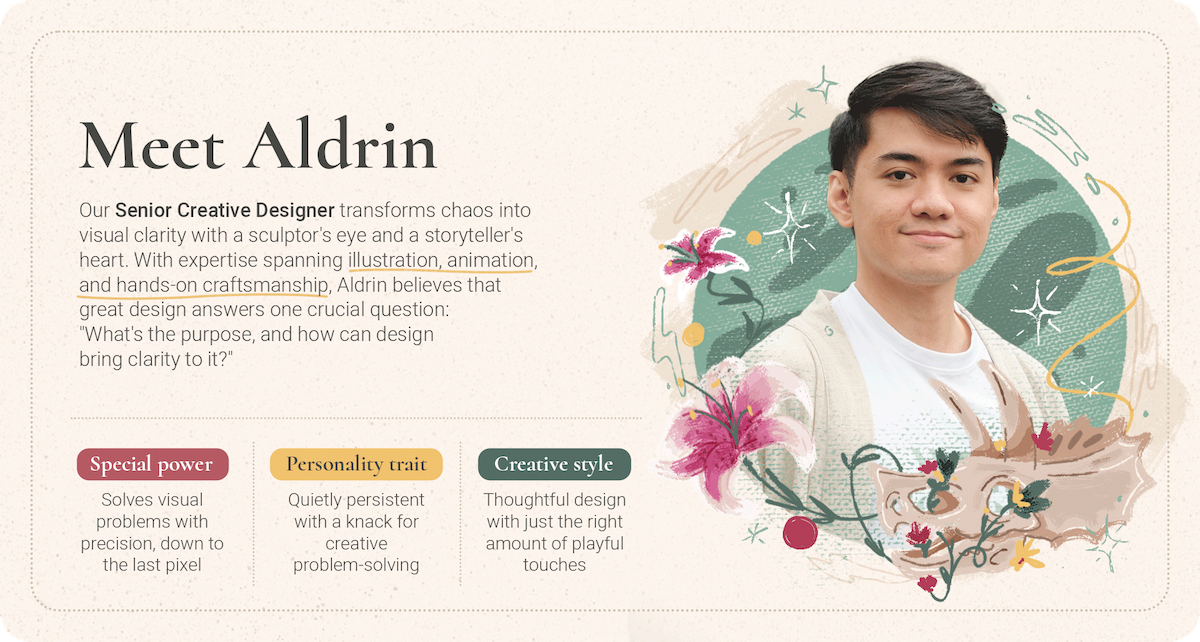
I have a pet theory: bilingual Asian writers have to work doubly hard to write concise copy. I think we’re culturally indoctrinated to equate respect with roundabout language: we habitually lengthen and contort our speech to sound respectful, un-imposing and unlikely to offend.
It’s like saving face, but with words: admirable for face-to-face conversations, but fails spectacularly when you’re writing copy to convince, move readers to action.
Note our love for the passive voice; if the subject is acted upon by the verb, like “the window was broken by the storm”, it sounds a bit more removed and less imposing than the active voice, “the storm broke the window.” Asian polite wins – but at what expense?
The high cost of roundabout writing
You might sound polite, but also less certain. If the reader senses you’re not sure of what you’re saying, they’re less motivated to read on, follow through with the rest of your message.
You’ll also sound less authoritative. A Columbia Business School study found that jargon – defined as linguistic complexity, acronyms, and legalese – tends to be used by junior people trying to assert authority in a given field. But it can also be a marker of lower status – deadly for us as writers, when it gets in the way of our projecting leadership or excellence on their behalf.
In the worst cases, needlessly long sentences full of clutter like “apparently”, “it was said”, can read like the textual equivalent of a stammer.
Why concise writing matters
By its very definition, conciseness means “using the fewest words possible to clearly convey an idea.” Its simplicity belies the hard work it takes, for new writers, to master the concept.
But so much depends on your mastery of concise writing.
First, concise copy gets to the point immediately. Now that readers “have a shorter attention span than a goldfish,” as a 2015 Time article put it, you simply cannot lean on Asian polite, roundabout, clutter filled sentences anymore. “Since the year 2000 (or about when the mobile revolution began) the average attention span dropped from 12 seconds to eight seconds,” the article explains. You have eight seconds (or less) to get to the point, or else your reader will drift away.
Second, concise copy sounds more authoritative – and as a result, it’s more persuasive. You sound sure of your argument. You’re confident you’re right. You make your client look good. And when you deploy concise copy to confidently make your case, you can drive more of your readers to the action you want them to take.
So drop Asian polite; use the following concise content hacks to firm up your copy, give it confidence, and lose the flab.
1. Know your objective
Every assignment can be reduced to one major takeaway: what is it? What’s the message you want to convey, and what action do you want your readers to take? Having a laser-focus on the content objective will help you get straight to the point, and avoid all those unnecessary verbal detours.
When you DON’T understand the objective, the editor and the client can really tell! In my experience as an editor, fluffy writing reveals that the writer doesn’t understand the topic very well, at worst they’re trying to BS their way through the assignment. So save us both some time and read the brief!
2. Start each sentence with a “who”
Who’s the “who” that drives the action in your sentence? Put that “who” up front: a simple concise-writing tip that comes to us from business communication teacher Erin Lebacqz from her High Value Writing Youtube channel.
“You do not have to go through crossing out all the little words,” Erin explains. “There’s a strategy you can do to make those words fall out, they just disappear!” Don’t believe her? Compare the following sentences: one where the “who” is hidden way in the back, and another where the “who” takes center stage:
- The decision to purchase data services was made by the board.
- The board decided to purchase data services.
- A number of proposals have been considered by the committee.
- The committee considered a number of proposals.
- 10.5 million tonnes of steel will be produced by the new smelting factory annually.
- The new smelting factory will produce 10.5 million tonnes of steel annually.
Starting with the “who” helps you get to the point ASAP – frontloading essential info in the sentence, while reducing fluffy, empty words like “is”, “are”, “by” and “for”.
3. Reduce wordy verbs
Verbs are the MVP in any sentence – they provide information and also dictate tone. By using concise, direct verbs, you can simplify the information in a sentence and gain greater control over tone.
- The CSO is interested in hearing your feedback.
- The CSO welcomes your feedback.
- The new manager put me on the schedule for Wednesday.
- The new manager scheduled me for Wednesday.
- Extend your friends an invitation to our conference.
- Invite your friends to our conference.
When you’re uncomfortable with direct action in a sentence, the verb is usually the first casualty. Sometimes we smother it in a “tion” or “ion” to put some distance between yourself and the action – turning the verb into a noun, a crime against conciseness called “nominalization”.
But removing the “ion” turns the sleepy noun back into an action-packed verb: making the sentence much more powerful, and cutting the clutter as well.
- An evaluation of the methods needs to be done
- The methods need to be evaluated.
4. Remove “to be” verbs
“To be” verbs – like is, are, was, were, will be, has been, are all fluffy-attracting verbs – as Erin Lebacqz puts it, “It doesn’t mean much on its own, so we have to end up bringing in more fluff.” They’re like the empty calories of sentences: lots of flab with no nutritional value.
Erin suggests we substitute “to be” verbs with visual verbs – “that will actually make the sentence simultaneously more informative, but also more concise,” she explains.
- Dick is a writing teacher.
- Dick teaches writing.
- You are interested in 5G solutions.
- You want 5G solutions.
- Initial reports are suggestive of increased productivity.
- Initial reports suggest increased productivity.
5. Ruthlessly root out clutter
Clutter increases the word count but fails to deliver any substantial benefit for your trouble. Personally, I think cluttered copy betrays a certain insecurity – the mark of a writer that can’t quite trust their own ability to deliver a message.
Why write fluffy sentences, when you can remove the filler and be all killer? Trust your words to communicate what you mean! Eliminate redundant words, replace long phrases with single words, and avoid filler words like “basically,” “actually,” and “really.”
Sometimes you just need to hunt down the word “that”, which is mostly unnecessary.
- It is important that we make a decision quickly due to the fact that we are on a tight schedule.
- We must decide quickly because we’re on a tight schedule.
The word “very” also gets a lot of hate with editors, and that hate is “very” justified. Use a thesaurus, delete “very” from your vocabulary.
- He was very sad.
- He was despondent.
If you’re not careful, you might let redundant words slip past the door. Read every sentence and prune away redundancies.
- The engineer considered the second monitor an unneeded luxury.
- The engineer considered the second monitor a luxury.
- I personally would prefer to test the software before buying it.
- I would prefer to test the software before buying it.
- She was in an elated state of mind.
- She was elated.
Filler words just expand the word count, add nothing to the sentence, and can be shot on sight. Don’t lose your nerve: trust your words to communicate what you mean!
- Basically, the first widget pretty much surpassed the second one in overall performance.
- The first widget performed better than the second.
6. Write less, imply more.
When writing concisely, always keep in mind what is implied and what isn’t. Write sentences that say more with less: implying where possible, without stating outright.
7. Where possible, break these rules.
I’ll leave you with this last tip: conciseness is not the end-all and be-all of writing. Aim to write something interesting. And if that means keeping a couple of “to be” verbs or (God help us) writing in the passive voice, as long as it serves the ultimate goal of communicating your message clearly and compellingly, then go for it!
—
200+ industry-leading tech companies in Southeast Asia are happy clients of With Content. Join them and start delivering valuable content to your potential customers today.



